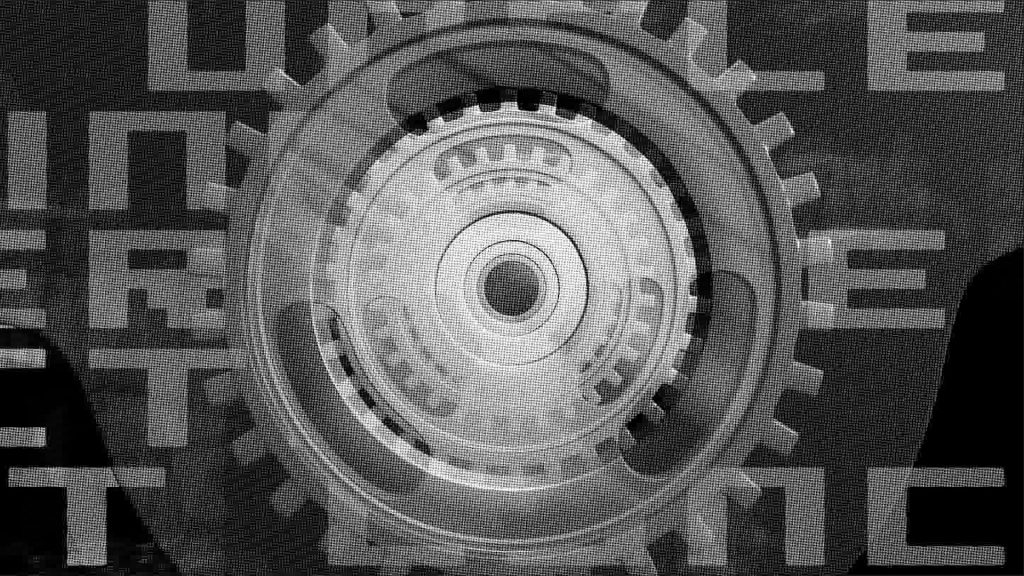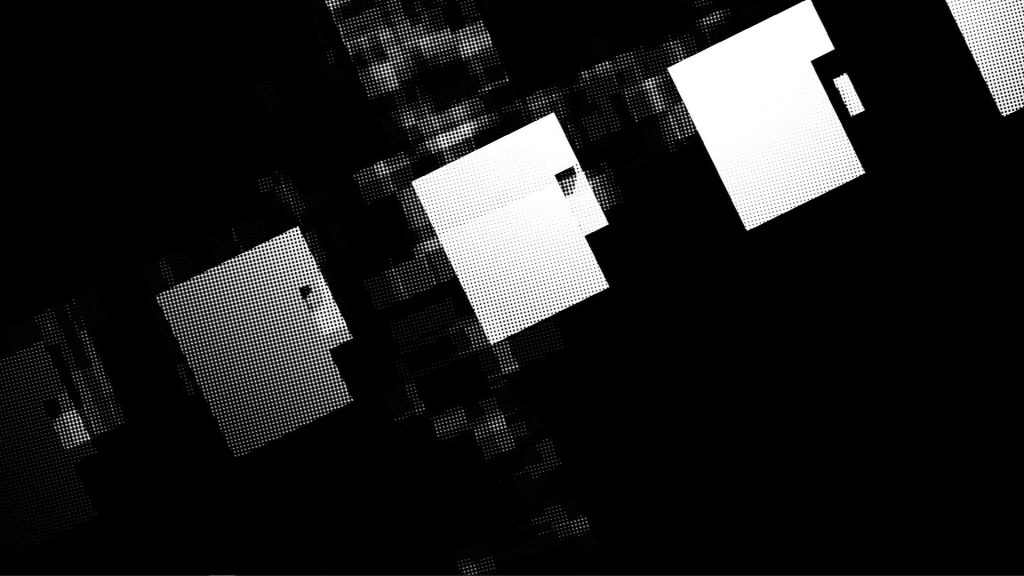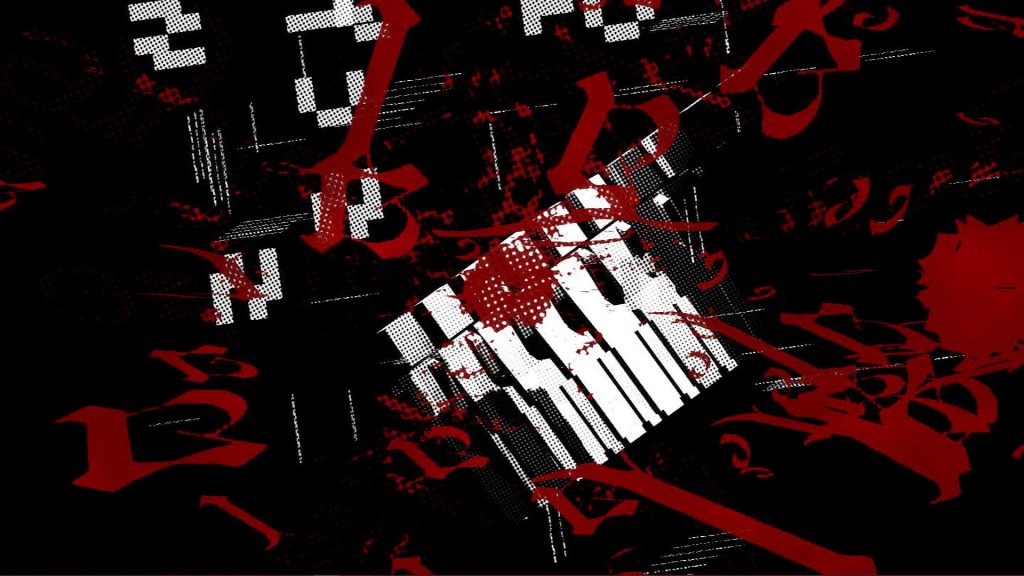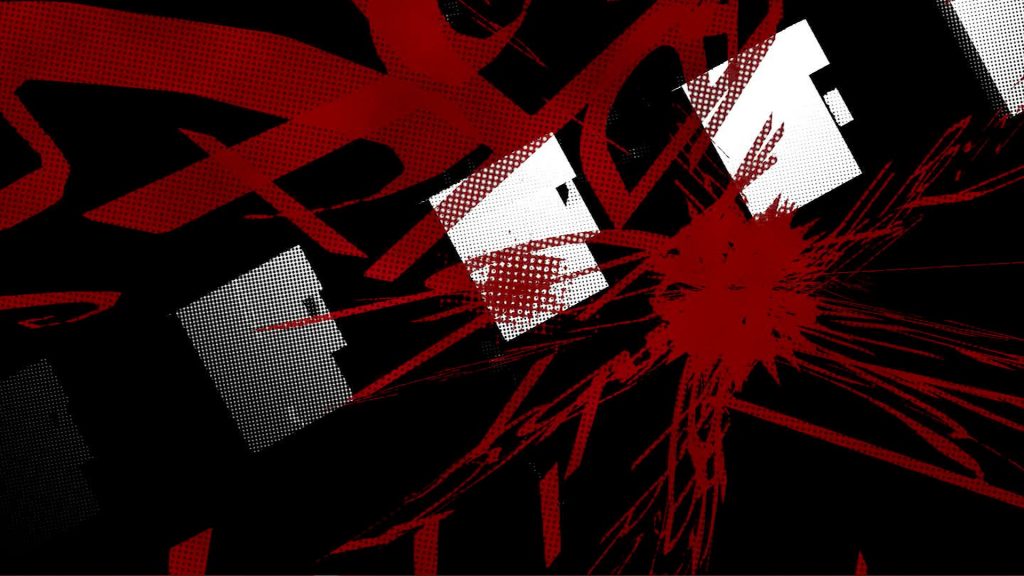The new video for the Synapscape track “Dirty Deal” was produced entirely with the VSx video synthesizer system, with “traditional” post-production tools (Adobe Premiere and After Effects) used only for the final edit and some (minimal) compositing.
The creative direction was left wide open (the only stipulations from the band were no porn, no fascism and no violence), and as anyone familiar with Synapscape’s brand of phonetic poetry, there’s not much to reference directly from the lyrics. So direction had to some from the title, as well as the overall feel of track.
Themes
Conceptual
Beginning with the two words of the title:
DIRTY — soiled with dirt; foul; unclean; spreading or imparting dirt; vile; mean; sordid; contemptible
DIRT — any foul or filthy substance; something vile, mean or worthless
DEAL — a business transaction; a bargain or arrangement [verb] to occupy oneself, to take action, to distribute (also noted: “deal” is apparently derived from the German tielen, play)
When one thinks of dirty deals, what comes to mind? One could imagine drugs or sex, but that seems a bit too gratuitous (and porn was verboten). There is of course also the world of business and finance, and while researching some ideas I ran across a Village Voice article from 1979 about construction deals in New York in the ’70s, in particular those involving one (young) Donald Trump (arguably the master of the Art of the Dirty Deal). From here some themes developed: businessmen (especially those who mechanically fall in line to support their relationships), and also construction.
Visual
Words, words, words are always part of deal-making. I wanted to work with dynamic typography as design elements on multiple levels — including a highly dynamic, distorted type treatment that would visually represent the vocal of the track. To make the “vocal” stand out, it would be the single chromatic element. Aggressive, power-tie (or blood) red seemed a good choice for this.
Visually I imagined a gritty, distorted aesthetic, monochrome (thinking of old newspaper) — a halftone treatment. Also lots of dutch angles, generally avoiding 90-degree compositions where possible: “there is nothing ‘regular’ or ‘right’ in the world of the dirty deal!”
In the back of my head I had early 20th-century art references in mind, such as Constructivism, Russian Avant-Garde poster art, Futurism.

Dynamism
Beat driven, mechanical music suggests a synchronized tempo-locked treatment of edits and animation: as if the entire composition is one big integrated machine. And business is a machine, so this all seems to work.
Businessmen, focused on profit, often march in line (like soldiers) towards a goal without awareness or concern for what’s around them. And while not going the full-on porn route, I still wanted to reference the idea that those in business deals (especially those of a shady nature) are often “getting fucked,” “jerking each other off,” and so on. I imagined a few simple, abstract animated elements (including a tie-wearing business automaton) to reference these themes without getting too explicit.
Preproduction
As these things usually begin, I started making notes and sketches in my notebook. This is where some architectural and automaton/robot themes and dynamic type treatment approaches developed.
(“Bendover machine” and “pistonhead” didn’t make the final cut; “jerkoff machines,” “big guns” and the tie-wearing automaton did, along with some pounding pistons and other mechanical forms).

This wasn’t (consciously) intentional, but in retrospect, the automaton head that I decided to go with (deciding to go with “blockhead” instead of “pistonhead”) does seem rather reminiscent of Oskar Schlemmer’s Seal of the Weimar State Bauhaus from 1922 (an image now associated more with the band than the institution).
Production
The VSx system is ideally suited to creating beat-driven imagery, with animations locked to various musical elements. I started by bringing the audio track into the sequencer (Ableton) and mapping out each section. Envelopes were added to track specific parts (e.g., the vocals).

Envelopes on multiple tracks as well as overall (tempo) synchronization are mapped through the VSx plug-in interfaces.


Individual elements in the graphics engine are controlled through the Channel Control interface, which allows linking of envelopes on multiple tracks to specific to engine parameters. This allows animation keyframes or envelopes to be linked to specific entities within the 3D graphics world. The system also syncs the graphics engine to the music tempo, allowing a variety of animation cues to follow the beat precisely. This level of synchronization would be far more difficult to achieve with conventional video production techniques.
In the VSx world, everything happens in 3D space. Many animated elements in this video are the result of movement through a 3D scene, in and around multiple animated compositions — with each move locked to the beat.
Everything also happens in real time, so every bit of footage in the video was a live mix in the studio, with the controls on the VSx interface allowing improvisation and tweaking until a treatment has the right look and movement.























